#mike dimartino
Text
Braving the Elements season 3
The new season of the podcast Braving the Elements concerning the book 3 of the Avatar the Last Airbender started, predictably with the appearance of Mike and Bryan. They talked a little about how busy they are with “something” and a bit more about book 3 “Fire”. There was a lot of mutual admiration and general excitement, but we got some information as well.
- It’s been 20 years, and they don’t remember every detail of their thought process
- they remember some stuff, and are always happy to talk about their inspirations. Like Bryan talking about his trip to Iceland, his admiration for its natural beauty made by volcanic activity, and how Iceland photos became Fire Nation landscapes.
- or Mike telling about his trip to Bhutan and his awe at the Tiger’s Nest temple that became an inspiration for the Western Air Temple.
- they talked about how Ozai’s face reveal – that he is just a regular guy who looks like older Zuko whole we don’t see until Zuko meets him face to face – was initially thought to mean one thing, then it started to mean a slightly different thing, and it is fine.
- Dante was super excited to meet Mark Hamill when recording voices for Zuko and Ozai. (who wouldn’t)
- they talked about inspiration for the lion turtle they found in Korea, and that it really was meant to me there in the story from the beginning, and they tried to hide it while giving away glimpses.
- 99.9% of Air Nomads were airbenders. Because that’s how they invented that world, that’s why.
- Aang was never going to kill Ozai. Never ever. He is a monk and has monk ethics no matter what everyone was telling him.
- animating the scene where Aang and Ozai’s souls are fighting for the dominance during the energybending moment was rather challenging.
- In Bryan’s mind, Iroh is ten years older than Ozai. It is not a confirmed canon, more like idea. Iroh looks much older because of the life he lived, while Ozai has an amazing skincare routine.
- they don’t know any other Fire lords’ names. But you know, those names appear and will appear in various materials – novels, RPG, etc.
- Mike and Bryan love canon relationships – surprise!
- Dante admitted that while he ships Zutara, he started vibing with Zuko/Mai’s relationship as well as he was actually watching the show. Which is fine, and only serves to show his general attitude to shipping: it is a fun activity that keeps the interest going and in the long term helps him to earn money.
- Yes, Dante, there are good people in the Fire Nation, as you’ve been saying all the previous episodes. This time everyone agreed, since we are finally arriving to the Fire Nation.
- I probably forgot something, but you may listen to it – or, for the first time – also watch it on the Avatar the last Airbender official Youtube channel. At first I thought why? And then after I listened to the podcast I couldn’t remember what said Bryan and what said Mike. Not to imply that they are the same – they are very much not- but I have a trouble distinguishing voices I don’t know well. So I watched a bit – and really liked it. Whoever edited the video did a great job of adding some visual jokes and visual illustrations to whatever Janet, Dante, Mike and Bryan were saying. So we can see how Bryan’s photos of Iceland became the Fire Nation, and how Tiger’s Nest looks like.
And it is so easy to remember who was saying what! Mike is the one who looks like Aang, Bryan is the one who looks like Zuko, Dante is the one who sounds like Zuko. And occasionally talks as if he is Zuko.
#avatar the last airbender#atla#zuko#aang#ozai#braving the elements#bryan konietzko#mike dimartino#dante basco#janet varney
27 notes
·
View notes
Text
I love kataang as much as the next person. They've been my actual OTP since '05. However, I will say that them getting together at the end of the series was a bit rushed. Do I like them together? Yes. Do I think they would have ended up together no matter what? Yes. But was their "getting together" sped along too quickly at the end? Also yes. They were both still kids, and they could have used a little time to sort things out before committing to each other. That's all.
I realize that we don't know how much time elapsed betwen the coronation and the scene at the tea shop, but from a viewer standpoint, everything got wrapped up so quickly, that I barely had time to process what happened.
#my post#atla#avatar the last airbender#kataang#pro kataang#aang#katara#nickelodeon#bryke#mike dimartino#bryan konietzko
24 notes
·
View notes
Text
(WIP) "Unearthed Emotions: an ATLA fanfic comic"



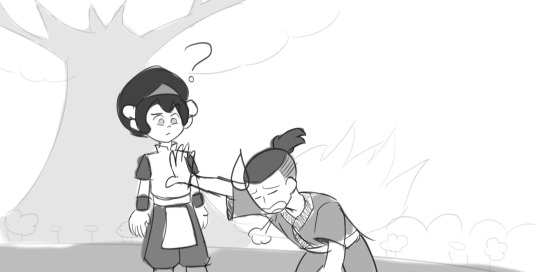






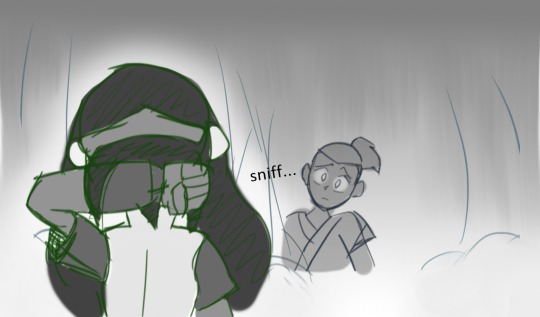
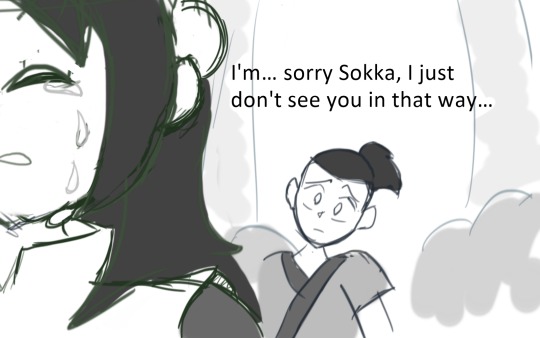

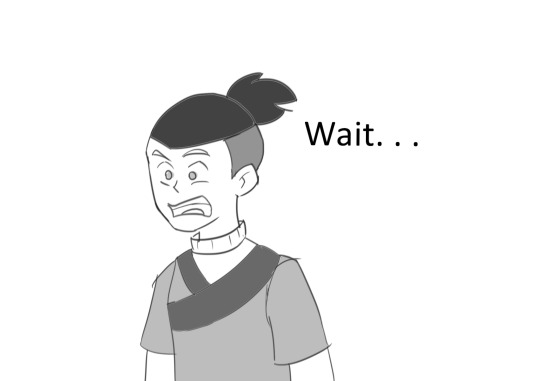

#avatar fanart#avatarthelastairbender#avatar#sokka#atla sokka#sokka of the water tribe#toph#toph beifong#toph and sokka#toph atla#nickolodeon#nicktoons#mike dimartino#bryan konietzko#avatar fanfiction#fanfiction#fanfic#fanart#sokka fanart#toph fanart#storyboard#web comic#comic#atla fanart#avatar the last airbender#nick#cartoon#anime#anime and manga#anime fanart
27 notes
·
View notes
Text
Avatar: The Last Airbender novas informações do filme animado
Durante a CinemaCon '24, a Paramount Pictures divulgou algumas novas informações sobre o vindouro filme "Avatar The Last Airbender". Além disso, divulgou o elenco de voz do longa.
#AvatarTheLastAirbender #ATLA #Aang # AvatarStudio
Durante a CinemaCon ’24, a Paramount Pictures na sua apresentação divulgou novas informações sobre os projetos do Avatar Studio. Neste anúncio tivemos a confirmação “Avatar: The Last Airbender”, filme animado focado na equipe do Avatar Aang na fase adulta, será uma trilogia.
Além do anúncio que o filme “Avatar: The Last Airbender” será uma trilogia, a Paramount divulgou o elenco de voz.…
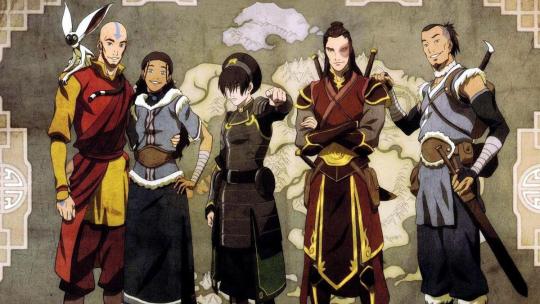
View On WordPress
#10 de outubro 2025#aang#Avatar The Last Airbender#Bryan Konietzko#Dante Basco#dave bautista#Katara#Lauren Montgomery#Mike DiMartino#Sokka#Toph#zuko
3 notes
·
View notes
Text
The Cycle Repeats: Part I
One of the key themes of the ATLA franchise is the concept of the Avatar; master of all 4 elements, the fusion of humanity and Raava, the spirit of light and order, whose sole duty is to bring balance to the world, and be the bridge between both the physical and spiritual realms. Along with this comes the idea of reincarnation, which is the premise of the Avatar Cycle, the idea that the Avatar reincarnates in a cyclic order in any of the four nations (fire, air, water, earth). Another concept related to the Avatar Cycle (although originating from the fandom) is the idea of the Avatar fixing the mistakes of their past life, which is often indicated in differences in both habitual circumstances and personalities between both predecessor and successor, and therefore differences in morality.
But what if I were to tell you that the saying "history repeats itself" is also true among Avatar incarnations? Not exactly going the same way, but rather parallels between the lives, personalities, and accomplishments (and failures) of past lives?
In this series of metas, I will be going over parallels (or in some cases, foils) between certain pairs of Avatars that lived decades, or even centuries apart, and yet could not have ever been more similar.
The Unlikely Analogy: Avatars Aang and Kuruk


"Aang was an Air Nomad born in 12 BG and the Avatar during the Hundred Year War, succeeding Avatar Roku and preceding Avatar Korra. As the Avatar of his time, he was the only person capable of using all four bending arts: airbending, waterbending, earthbending, and firebending. He was also one of a select few Avatars and one of the first in many cycles to learn the ancient art of energybending as well as the first Avatar known to have actively used the technique."
"Kuruk was the Water Tribe Avatar immediately succeeding Avatar Yangchen and preceding Avatar Kyoshi. Native to the Northern Water Tribe, he was a powerful and gifted bender who dreamed of changing the mortal world for the better by uniting the people and acting upon the foundations laid by Yangchen."
Both texts above are directly taken from the first paragraphs of their respective wiki pages; however, you would be forgiven for believing they are nothing alike, specifically due to their respective heritages. In reality, I would wager that Aang and Kuruk are actually the same person (literally and metaphorically).
(WARNING: There will be possible spoilers for both The Rise of Kyoshi and The Shadow of Kyoshi, particularly regarding Kuruk's backstory. If you do not wish to be spoiled, I suggest not reading any further and scrolling past this post until you have finished reading both novels. You have been warned.)
Kuruk's legacy plays a central role in both Kyoshi novels, especially in the Shadow of Kyoshi, where it's revealed that Kuruk hunted and killed dark spirits. This lead to both his body and spirit falling apart and him dying at just 33.
The first parallel is, ironically, their heritage. Aang is an Air Nomad, and his native element is air. Kuruk is a Water Tribesman, and his native element is water. Air and water are compatible in the sense that water can literally be described as a combination of the qualities of earth and air. Like earth, water can be strong and solid. Like air, water can be gaseous, fluid, and unpredictable. However, water also has an intermediate liquid state, with a definite volume, but always changing shape. Something about being the element of change or something. Just like the Avatar Cycle. I actually wrote a meta dedicated to this subject.
Why am I mentioning this? It's because the first element Aang learned to master (besides air, ofc) is water (which was also the element that was easiest for Aang to learn besides his own, due to air and water having similar philosophies), and he first learned to waterbend in the Northern Water Tribe, Kuruk's home (although he only learned the basics with Master Pakku; he only mastered it under the tutelage of his companion Katara of the Southern Water Tribe, who is also part-NWT). Conversely, the last element Kuruk learned to master was air, and he mastered airbending at the Southern Air Temple, Aang's home (he learned to master it under the tutelage of his companion Monk Kelsang, and it can also be assumed hat it was the element that was easiest for Kuruk to master besides water). Both Kelsang and Katara go on to become mentors to Kuruk and Aang's successors, Kyoshi and Korra respectively.
Another parallel is that both Kuruk and Aang were successors to wise and influential Avatars of their time (Avatars Yangchen and Roku respectively). As I have said in the first paragraph of the introduction, I mentioned the idea of the current Avatar fixing the mistakes of his/her predecessor. In The Shadow of Kyoshi, it is revealed that Yangchen neglected the spirit world, often siding with humans when making decisions between them. This lead to an increase of corrupted spirits ravaging the physical world during Kuruk's time by passing through rifts created by Father Glowworm, some attacking up to a dozen villages in one day. In the episode The Avatar and the Firelord (Book 3: Episode 6), it's revealed that Roku, by refusing to kill Firelord Sozin, was unable to prevent the Air Nomad Genocide and, by extension, the Hundred Year War. Both Kuruk and Aang had to face the consequences of their revered past lives.
Also, Kuruk ended up spending so much time in the spirit world that he ended up neglecting his duties in the physical world. He also started leading a lifestyle filled with alcoholism and debauchery, both as a coping mechanism and as a smokescreen to hide his duties from his Team Avatar (Jianzhu, Kelsang, and Hei-Ran). This means that both Aang and Kuruk have avoided their Avatar duties, but due to different reasons. Aang ran away because he didn't WANT to be the Avatar, while Kuruk ran away because he NEEDED to be the Avatar.
Kuruk hid his illness from his friends because he wanted to protect his predecessor, Avatar Yangchen's legacy (she often sided with humans over spirits when making decisions between them), and because he worried for his friends' safety. Both Aang and Kuruk share a common fear: being unable to save their loved ones from despair. This can be tied to the episode Nightmares and Daydreams (Book 3: Episode 9), where Aang suffered with anxiety nightmares the night before the Black Sun invasion. One series in particular consisted of his friends, Zuko, Katara, Sokka, and Toph, suffering, with Aang unable to save them, and Kuruk's refusal to confide in his friends to keep them safe (which could be a result of two of Yangchen's companions sacrificing their lives to protect her, and Kuruk not wanting to repeat it). The difference is that unlike Kuruk, Aang did confide in his friends (more accurately, you could say that his friends confided in him, as he was the only one able to defeat Firelord Ozai), and in the end, they all played a role in defeating Ozai.
This isn't even taking account the Kummi-Taang theory, which indicates more parallels between them both. To give a simple run-down, the theory states that Toph is a reincarnation of Ummi, Kuruk's wife, whose face was stolen by the spirit Koh The Face Stealer, hence why Toph was born blind, and why Aang met her in the mystical swamp in the episode of the same name (Book 2: Episode 4). I'll post another link to the actual meta dedicated to it:
On a more positive note, both Kuruk and Aang are stated to be bending prodigies, Kuruk especially. They each invented an airbending technique at the Southern Air Temple during their airbending training, demonstrating their unique creativity and adaptability (Kuruk's technique involved creating a cushion of air under a heavy object so it could be slid and moved over a floor with care, Aang's technique, the air scooter, is a spherical "ball" of air that can be ridden balancing on it like a top). Aang had already learned 35 of the 36 tiers of airbending at the time, so it would be rather ironic if Kuruk's technique was the only one Aang hadn't mastered at the time; however, I do have a theory that both techniques are connected, which I will discuss in a separate post. Aang earned his airbending mastery tattoos, and had Kuruk been an Air Nomad, he woud have gotten the same tattoos. Though, he did get a sky bison as a gift, and Aang's animal companion was a sky bison (Appa).

I noticed that the only time Kuruk actually wears his iconic polar bear headdress is when Aang summons him in the episode Sozin's Comet, Part 2: The Old Masters (Book 3: Episode 19), not counting his brief appearance in The Avatar State (Book 2: Episode 1). In The Old Masters, Aang summons the past four Avatars before him for advice on how to defeat Firelord Ozai. According to @atlaculture, Kuruk's decision to wear the headdress in front of Aang--a strict vegetarian--could be him subtly reminding Aang that killing isn't always merciless (as Kuruk was a hunter, and probably had to hunt down large animals for food or as a rite of passage), which is stated here.
I noticed the line Aang says just before he summoned Kuruk:
"I need to look deep inside myself."
Despite the existence of the webcomic Escape from the Spirit World, which takes place between Books 2 and 3 (although Yangchen did say Aang wouldn't remember his journey in the Spirit World), this lines implies that out of Aang's past four lives, Kuruk's is the one he knows least about (Roku was Aang's predecessor, Aang probably knew/learned a lot about Kyoshi during his visits to the Earth Kingdom, and Yangchen, being an Air Nomad like Aang, was revered almost as a god-like figure across the four nations). Ironically, if you dig deeper, Kuruk is also the past life who was/is most similar to Aang.
Also, Kuruk's actual advice to Aang was: "Aang, you must actively shape your own destiny and the destiny of the world." This piece of advice has multiple interpretations. What Aang interpreted was Kuruk telling him to kill Ozai (combined with the fact that Kuruk was wearing a literal animal skin in front of Aang, only reinforcing his interpretation). However, Kuruk never said anything about killing Ozai. He could have actually meant that to him, it doesn't matter how Aang defeated Ozai, or even if Aang did kill him. To Kuruk, the only thing that mattered was Aang performing the act of Showing Up, and actively finding a way to defeat Ozai himself. Therefore, Aang obtaining energybending and then taking Ozai's bending away rather than killing him doesn't mean he didn't follow any of the Avatars' advice. On the contrary, by actively finding a third option to end the war, and actively participating in the final battle, Aang actually subconcisiously followed Kuruk's advice to heart (although you could say Aang didn't follow Kuruk's advice, since Aang didn't actively seek out the lionturtle; rather he was merely kidnapped by chance).
The final parallel between Aang and Kuruk is their relatively young deaths; more specifically, their final wishes. Kuruk died at just 33, surrounded by his Team Avatar, and he made them promise to take care of his successor and make sure she succeeds as the Avatar. Around 500 years later, Aang died at a relatively young biological age of 66 (and the chronological age of 165) surrounded by his Team Avatar and the Order of the White Lotus, and he made them promise to do the exact same thing. However, both Yun and Korra ended up growing up isolated from the rest of the world, and being told that being the Avatar was the only thing that mattered, which led to a serious mental stunt, even though it wasn't Aang's fault Korra ended up being kept in the Southern Compound on the orders of Tonraq, Tenzin, and Sokka, or Kuruk's fault that Yun was being physically and mentally abused by Jianzhu and Hei-Ran. The only difference was that Korra was correctly identified as the Avatar, but Yun wasn't. Kyoshi did not grow up the same way, but she was not spared either; I'll make a meta on her too. But seriously, how in the four nations is it possible for two people who lived centuries apart die with the exact same wish given to their loved ones? Unless they were the Avatar.
In conclusion, despite the difference in Aang and Kuruk's heritage, morality, and overall results as the Avatar, one could argue that it is true that certain beats in the cycle often repeat, depending on their journeys, personalities, and abilities. In the next part, I will explore the parallels between Avatars Aang and Kyoshi, Kuruk's successor.

Next ->
#ATLA#Avatar#Aang#Avatar Aang#media analysis#Kuruk#Avatar Kuruk#The Cycle Repeats#Past Lives#Past Avatars#kyoshi novels#the rise of kyoshi#the shadow of kyoshi#On a completely unrelated note#I just realized that they both have the exact same beard too!#Even though adult!Aang's look was inspired by Mike DiMartino#Except Kuruk's beard is a bit longer#while Aang's beard is neat and trimmed.#mah rambles#mone's theory#mone digs deep
18 notes
·
View notes
Text
look at that they get along well why does atla fandom always make the OG out to be some big bads its crazy
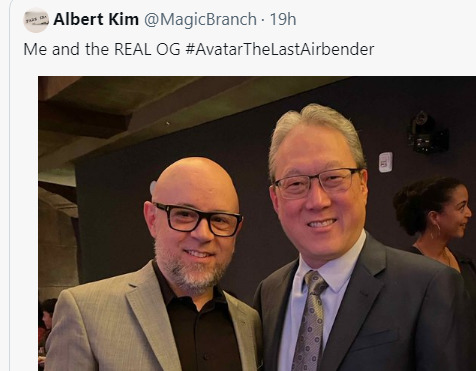
0 notes
Text
Michael Dante Dimartino and Bryan Konietzko confirms their favorite relationship on season 3:


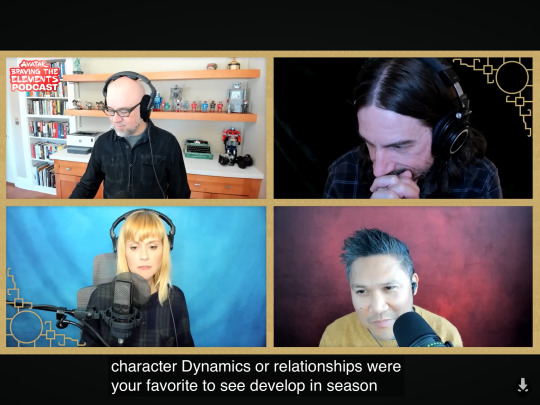
Janet: What is your favorite dynamics or relationship to see develop in season 3
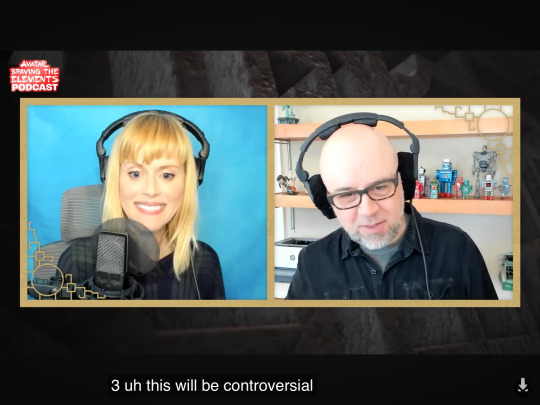

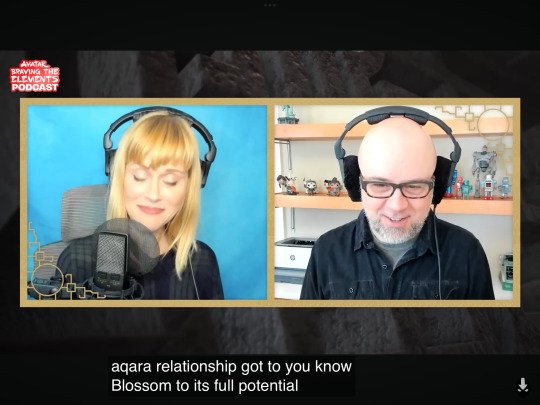
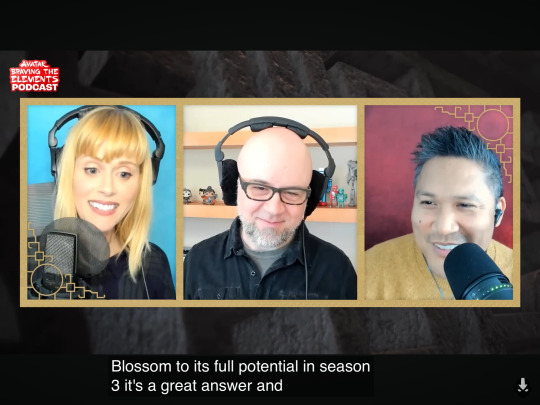

Mike: It will controversy, but it’s Aang and Katara relationship, you know, go to blossom to its full potential.
Janet: Great answer, but guess what: Canon controversy
(EVEN DANTE BASCO ADMITTED LOVES MAIKO)
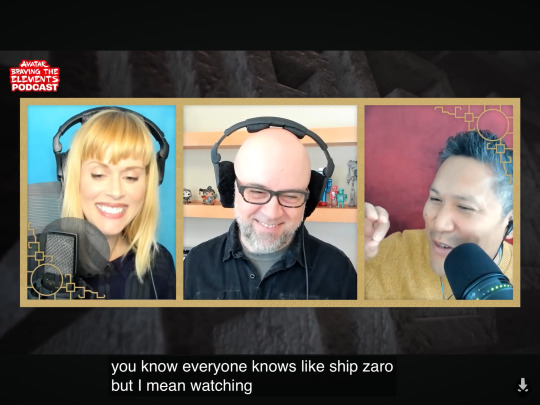

Dante: Everyone likes zutara but i means watching Zuko and Mai I’m vibing.
(HELL YEAH FOR MAIKO)
#kataang#aang and katara#katara and aang#aang x katara#atla#avatar the last airbender#otp#avatar#pro kataang#kataang defense squad#zuko and mai#anti zutara#michael dante dimartino#bryan konietzko#pro maiko#atla maiko#maiko#dante basco#janet varney#braving the elements
84 notes
·
View notes
Note
Do you know anything about where i can find people talking about the fake zk interviews, or how "zutara was originally gonna be endgame" was fake news? conversions haha 😅😅
as it stands, some of the writers on the writing team (joshua hamilton and john o’bryan specifically) wanted zutara. they confirmed this on braving the elements, the atla podcast hosted by dante and janet. one of them mentioned that there was an original pilot that initially had a zutara endgame. i’ve yet to find any evidence of this, and the actual series bible posted on Reddit mentions no ships, so who knows if this was something legitimate or false.
the popular rumour is that aaron ehasz was adamantly pro-zutara and devised a whole season 4 in which they became endgame, in addition to an azula redemption arc. this rumour came from a fake interview from a zutara blog who claimed to be an intern working at nickelodeon. aaron ehasz on video confirmed that the interview was fake, and also stated that he did not personally ship anything in his writing because rooting for a particular ship would lead to contrived plot points. rather, he went with the “natural flow of things” by listening to his characters and their needs. bryan later echoed the same sentiments on the braving the elements podcast, that fandom could ship what they want but ultimately they would make their writing decisions based on the direction of the story and the characters’ wants and needs, whether those decisions ended up finalizing platonic or romantic relationships.
on top of that, aaron ehasz also:
said that the only thing he would change in atla was a composition shot of azula and the gaang in the chase in the same interview that he denied wanting zutara as endgame
loved mai and maiko (him and his ex wife first introduced maiko in zuko alone)
confirmed parallels between kataang and rayllum
expressed his interest in reading kataang-rayllum parallel meta (i can’t find the tweet, but it was an interaction regarding @raayllum’s meta).
requested, alongside mike dimartino, the tale of oma and shu to be created as a way to develop katara and aang’s romantic relationship in the cave of two lovers (as confirmed by the writer joshua hamilton himself)
83 notes
·
View notes
Text
I'm going to puke, not even joking, this makes me feel sick, WHO thought it was a good idea to have Zack Tyler Eisen and Michael DiMartino on a big Zutara episode??
The second season was genuinely like... Really upsetting to listen to, it was just the most squeaky clean, judgment free praise of ATLA ever and of Bryke in particular, which was even more egregious because you can tell Janet and Dante aren't even into it sometimes but they have to sell it and. God I kinda loathed listening to most of it? Idk if I'm gonna bother with season 3 and beyond tbh, this was just. So fucking annoying to listen to in a way season 1 wasn't, and season 3 is 100% deserving of some serious criticism but they literally were incapable of even acknowledging how dumb The Guru is and I just genuinely don't think I'll have the mental capacity to listen to them praise the season that's the most deserving of criticism
God the contemptuous way Mike talks about the Zutara moment... I hate him. Like, fr, why are they allowed to shit so hard on Zutara but no one is allowed to come on the podcast to say how gross Kataang is? It's a vile fucking ship that ruined both characters, and having two Kataangers on a Zutara episode constantly shooting down what the two Zutarian hosts are trying to explain about why people love Zutara just genuinely might be the straw that broke the camel's back for me here. It's just so unclassy and. I hate listening to this so much, but I'm gonna see it through to the end... And then never pick it back up again because I'm not having fun whatsoever
#braving the elements#anti kataang#anti aang#zutara#anti bryke#atla critical#this sat in my drafts for a while because it seemed harsh but. Nah thats just how I felt listening to it so im posting it now anyway#i still stand by this tbh
75 notes
·
View notes
Text
alright, i'm done dealing with this bullshit.

i didn’t want to address this any further but since these people seem utterly obsessed with me & and have now gone on to harass my friends, i have had enough.
first things first, and i can't believe i even need to say this, but aang is a fictional character. he is not tibetan, because there is no tibet in the world of avatar: the last airbender. aang - and the air nomads in general - are the products of two white men's (and a predominantly white writing team's) interpretations of buddhism, hinduism and tibetan culture, interpretations that have themselves been criticized by actual tibetan people.
criticizing, mocking, or even making fun of aang does not make me racist towards tibetan people, just like criticizing zuko wouldn't make me racist towards japanese people, or criticizing toph wouldn't make me racist towards chinese people, because none of these characters are actual depictions of real life groups or cultures. they can't be, because those groups and cultures do not exist in the world of atla. (xiran jay zhao discusses this very topic, and the show's "representation" of asian and indigenous cultures, better than i can in their video essays, if anyone is interested in hearing more about atla from an east asian perspective.)
additionally, even if aang were somehow an actual tibetan monk, i cannot recall a single instance in which i said anything derogatory regarding his cultural practices or beliefs (which, again, stem from bryan konietzko and mike dimartino's understanding of tibetan monks). when i criticize aang (and once again i can't believe i need to say this), i am criticizing the writing of his character and the worldbuilding of his culture and people. not, you know, an actual person and their actual heritage.
i have no problem with aang being a pacifist, or a vegetarian, or shaving his head, or wearing robes. what i do have a problem with is his entire dilemma about killing being brought up in the last four episodes of the show, only to be resolved by a magic rock and a lion turtle instead of character growth and agency. what i do have a problem with is his treatment of katara, and his disrespect towards her cultural beliefs in favour of pushing his own on her. aang is entitled to believe in non-violence and the sanctity of all life; he is not entitled to make that choice for katara, as he tried to in the southern raiders. each of them has a right to their own beliefs, and neither should use their individual beliefs to impose upon the other, or dictate what they should do.
the really ironic thing about all of this is that i love aang. i have said over and over that i believe kat.aang could have worked, that i thought they were cute in book 1, that aang is a great protagonist who had potential for an amazing arc, if only it had been followed through on in book 3. my criticisms of aang's character come from my love for him, because he deserved better than the writers who turned him into their own self-insert fantasy.
so whoever you are that's been endlessly hounding my inbox, and now my close friends', calling me racist because of my opinions on a fictional character: for your own sake, just block me and go on with your life. your social justice crusade against a singular stranger on the internet isn't helping anyone, let alone actual tibetan people.
#the discourse#i really didn't want to bring this up again but given that this has now spread beyond just my inbox i felt i had to address it one last tim#i hope this clears it up for anyone who might have seen what's going on and is confused#further anons will just be blocked and deleted so you really might as well save your breath#anti kataang#aang critical#atla critical#anti bryke
135 notes
·
View notes
Text
Secret Auditions Where The Actors Had No Clue What They Were Auditioning For, And 22 Other Behind-The-Scenes Facts I Learned About "Avatar: The Last Airbender"
Albert Kim, executive producer and showrunner of Netflix's Avatar: The Last Airbender, has a massive task on his hands. After M. Night Shyamalan's live-action film left viewers disheartened, fans have been craving an adaptation that truly captures the heart of one of the most popular animated series in history. I was honored to speak with Albert, who was warm and welcoming, yet protective and passionate about his live-action adaptation. We spoke in depth about the differences between the animated series and his Netflix show, the motives behind those changes, and what was important to leave the same.
🚨 There are spoilers ahead for ATLA Season 1 🚨
1. Albert wanted to strike a balance between the episodic format of the animated show and his more serialized motives for the live-action adaptation.
"We always used the original as our guide for everything. It wasn't like we were creating a whole new story out of whole cloth, we were looking at all the stories of the the first season of the original, regardless of whether they were episodic, or led to a more serialized narrative. And then we kind of laid them out in front of us at the beginning of the season, and said, 'Which ones help us in getting from the beginning to the end of the season.' Because we knew we were trying to create a narrative thread that took us on a journey from the Southern Water Tribe to the Northern Water Tribe. And so once we had that framework in place, certain elements just started clicking into place. We could see something like Jet. Jet is a great character, who has all the right intentions, but has been driven into a bad place by the extremes of war. And then we could see a character like The Mechanist; same thing. Good character, good heart, but doing some bad things because of the war. And you know what? He would be in direct conflict with Jet. So let's bring them together. That meant taking them out of their original locations and then putting them somewhere like Omashu. It was a little bit of putting a puzzle together in that way. And as we did that we realized we could preserve the feeling of the original in those adventures. It was a challenge, and we had to walk a tightrope to do it. But that's the case with pretty much everything in the show."
2. Albert has been a fan of the original show for years, because his daughter would watch the animated series when she was a kid.
"I was a huge fan of the original ever since my daughter started watching it when she was a kid."
3. Albert used references from the animated series to change how the Avatar State would work in live-action.
"There's an episode in the second season, "Avatar Day," when Kyoshi inhabits [Aang's] body. It's a very short sequence in the original series, and slightly more for comedic effect. But we thought we could use that, and combine that with what we saw on the Roku episode. Roku also manifests through Aang, and we used that early on, because we needed the audience to understand what the Avatar State was and how powerful it was. In the second episode, we were traveling to Kyoshi Island, so we said, 'Why not use Kyoshi to do that?' We can't wait until we get to Roku's Temple to do that, so let's use Kyoshi. There's precedent for it in the original series, and we can adapt our rules for the Avatar State. There are little tweaks we made to the canon here and there to help us understand a little more of why this was important for [Aang]."
4. Albert spoke with Michael DiMartino and Bryan Konietzko (the creators of the animated series) before embarking on his showrunner journey and was "bummed" when they exited the Netflix series.
"When I got the call [to work on the series], I was really excited just for nothing else [other] than the opportunity to talk to Bryan and Mike, and kind of indulge my inner nerd about the show. Our first conversations, were me just asking a lot of Aang questions, and stuff like that. And, that was great. And then we got into the process of talking about what the show could be and the visions they had for it. And what I thought I could bring to the table as someone who hadn't been so intimately involved with the original, or the development process they had been involved with. I really enjoyed that process. I enjoyed collaborating with them and working with them. At around the time I had written the pilot episode, they had decided, for personal reasons, to leave the project. And I can't really speak to those reasons. They had been involved, obviously, for some time before I joined the project. And I was bummed about it, because I genuinely enjoyed working with them, talking to them, all of that. And I had hoped we could continue. But again, that was their personal decision."
5. Albert has never seen The Last Airbender film by M. Night Shyamalan
"I haven't seen it and it just sort of fell through the cracks for me beforehand. And then when I started working on this project, I deliberately avoided it, because I didn't really want to have those images or the creative choices they made in my head. I wanted to be independent."
6. However, Albert was aware of the criticisms of Shyamalan's film.
"That's not to say I wasn't aware of the criticisms of [Shyamalan's film]. I knew what people didn't like about it. And I don't think we were reacting specifically to those criticisms, but a lot of the choices we were already organically making corrected a lot of that. For instance, I always knew that we were going to be casting all Asian and Indigenous for this. It wasn't in reaction to what Shyamalan did in this feature. That would have happened if the feature didn't even exist. I know how it appears in certain cases, it looks like we may have been doing something in reaction to what happened in [his] film, but I never saw it."
7. Michael Goi, who directed the first two episodes of Netflix's adaptation, is still trying to get Albert to watch Shyamalan's film.
"Michael, our director of the first two episodes, he keeps teasing me trying to get me to watch this movie. Now that we're all done, he keeps inviting me over to his house. He's going to put up a screening room so we can all watch together. I said, 'I've gone this long. I'm not gonna break the record now.'"
8. Although the animated series does not show the decimation of the Air Nomads, Albert felt it was "important" for him to include it in the Netflix show to set the stakes for the series.
"I felt it was important to see that event, which is discussed often in the original, but never seen because, for me, it sets the stakes for the world. It shows you what it is that Aang is trying to stop. And without actually understanding that viscerally, for new viewers as much as for the diehard fans, it was a little hard to go on the emotional journey with him. You have to know what he's facing. And what he's facing is this incredible attack. And when you watch it, you see both the power of the Fire Benders, as well as the struggle that the Air Nomads faced, as well as their destruction and the death. And when Aang gets to ask himself, 'How am I as a 12-year-old kid able to stop that,' you understand it a lot more. It'd feel a lot more abstract as a burden and responsibility for him if we hadn't witnessed that."
9. Albert also felt that starting the series with the Fire Nation attack on the Air Nomads narratively helped viewers understand that he wanted to expand and differentiate the feeling from the animated series.
"Narratively kicking off the show with [the Fire Nation attack] helped, in my mind, send the signal that this was not going to be a note for note translation of the original. We weren't going to tell the story in the exact same way, with the exact same scenes and the exact same dialogue. We were starting off in a different direction. And signaling that this is our version of Avatar: The Last Airbender."
10. Albert felt that including the Agni Kai between Zuko and Firelord Ozai, which was also not shown in the animated series, was needed to flesh out who Zuko is as a character.
"The Agni Kai is so important to Zuko's character, it really forms who he is. And that's the same in the animated series as well. They just didn't show it. And I can understand why, because it's very intense and emotional. And possibly a little too intense for say, a Nickelodeon audience. But for a Netflix serialized drama, which is intended to be for all ages of viewers from 10 to 80, it felt like it was appropriate to show that scene. To show exactly what it is that made Zuko into the person he is. That was something I always knew we were going to do. And I don't think anyone would argue that it isn't the linchpin to Zuko's character. Not showing it felt to me, a little bit irresponsible."
11. Tying Zuko's ship crew, and his intention of saving their lives, into the Agni Kai storyline was Albert's way of expanding on the original in a way that felt organic.
"That was a great example of our entire philosophy for this series, which is that we were drawing upon familiar elements from the original, but then pushing certain things a little bit further. Fans are gonna recognize a lot of the events and scenes in that episode from the original. But then we also extrapolated a little bit, and added elements that felt true to the spirit of the original, but hopefully adds a slightly new dimension. Making his crew the ones that he saved, it felt like it was right for the moment."
12. Changing the gender of Shu, and making the Omashu love story a tale of forbidden queer love felt "apt" to Albert.
"I remember even in the original when I was watching the tale of two lovers, I don't know why maybe I wasn't paying attention, I actually thought they were [both] women. And someone in the writers' room corrected me. So I said, 'Oh, well, it feels a little more right if they are women because it's supposed to be a forbidden romance.' Even in the original, there was a reason they couldn't be together. And they had to hide their love. Which ends tragically, but then leads to a piece of understanding. And for those reasons, it felt like making them both women actually was apt for this story."
13. When it came to casting, Albert wanted to make sure the actors were "ethnically and age-accurate."
"Our casting process was thorough. We saw a lot of great actors and great performers. We always knew it was going to be a challenge. Because we were all committed to making sure we were ethnically and age-accurate. We knew that we didn't want to cast a 20-year-old playing a 12-year-old, and we wanted to cast someone who was Asian. We always knew it was going to be tough."
14. The casting was done secretly, meaning none of the actors knew what they were auditioning for.
"It was even more challenging for them, because the casting process was conducted in top secret. They did not know they were auditioning for Avatar. And I had to write fake scenes for all of them. I think [the fake scenes] were about some math wiz applying to a private academy. Gordon, when he was auditioning, didn't know he was auditioning for anything."
15. There was never a doubt that Gordon Cormier should be cast as Aang, even after Albert auditioned several other actors for the role.
"When we saw people like Gordon, there was something about him that just captured the essence of the character. And we kept coming back to him even after we kept seeing other actors who were great. A lot of them were incredibly talented. But after every discussion I would have with the producers, we would always say something like, 'But what about Gordon.' And then we would come back to him, and we kept coming back to him. What we were looking for was a certain spark, a certain essence that said, 'This is who [Aang] is.' And that's what we kept seeing. It didn't matter what the scene was, it was just his personality, his overall character that was shining through. And I think you see that when you see the show. A lot of people I know are a little weary about our version of Aang. But when you watch it, and you see Gordon in his performance, I don't think there's any doubt. He doesn't even have to say a line of dialogue for him to be Aang. He could just give you a look, or a smile. And he's that way in person. He was like that on set every single day. I can't count the number of times crew members would come up to me and say, 'This kid is Aang.' Even when he's not on camera, he is Aang. Whether he was hopping on the back of a camera car, or running around with the other kids. We were incredibly happy that we found him, and all the others."
16. Although Sokka is less sexist at the beginning of the journey than his animated counterpart, Albert felt that they "preserved" his character growth in other ways.
"It wasn't a matter of, say, removing anything from his character. He still has a complex and nuanced journey. But in the process of going from an animated series, to a live-action, we knew that we wanted to portray his journey with a little more groundedness and subtlety. He starts out with attitudes that are the result of living in an isolated life and community. And yes, some of them are rooted in sexism. But he's not out there saying, 'Girls sew and guys hunt.' People have been reacting to comments without having seen the show. When you do watch it, I think it'll become clear that we've preserved Sokka's character, flaws and all. And he has a journey that's as complex as the one you saw in the original. It's just not a one-to-one."
17. Albert also felt that he had more room to build Sokka's character than his sister, Katara.
"Sokka was a character that there was a little more room to add to his character. Katara had trauma over her mother's death, and it's well told in the original. Sokka, we had to fill in the gaps a little bit more, especially for this first season. It was one of the things that struck us immediately. The question of imagining, if you're Sokka, and you're left alone by your father, to take care of your entire community at that young of an age. That's got to be a great burden. And what does that do to him, because his character is naturally lighthearted and funny, and a little bit goofy. But he's got this incredible responsibility to bear. And what does that do to someone? We play with that all season long until you get to the episode [with Koh]."
18. Bringing Azula into the first season as a main character, although that doesn't happen until the second season in the animated series, helped "dimensionalize" Zuko and his family.
"We had the benefit of hindsight, and we knew where the original series was going. And we knew what a great character both Ozai and Zula were going to be. And we wanted to pull a little of that into the first season just to balance out the storytelling a little bit. Creatively speaking, we wanted to use the characters of Azula and Ozai to help dimensionalize Zuko a little more, and then help us understand exactly how he became who he became outside of just the Agni Kai, and that traumatic event. Even though physically, Zuko and Azula are never together in the first season, it doesn't matter. You can still see how the dynamics of this family made him who he was, just like it made Azula who she was. In a way, the first season is a little bit of a prequel story for Azula because when she arrives in the cartoon in the second season, she's kind of fully formed as a character. Here we see a little more of her journey as to how she gets there."
19. Albert feels like the Zuko/Azula/Ozai relationship is representative of an Asian family dynamic.
"And to me, it's very much an Asian story, not that it's limited only to Asian families. But that pressure to exceed the parental expectations. The sibling rivalry all feel, from my personal point of view, like an Asian story."
20. The actors went through an intense six-week boot camp to train for their fighting scenes
"We're incredibly fortunate in that both Dallas [Liu, Zuko] and Ian [Ousley, Sokka] came to us as incredibly accomplished martial artists. Both of them are world-class in their fields. They already knew what they were doing. And even with that, we put all four of them through a pretty intense boot camp before we even started shooting. It was about six weeks, where they trained with the stunt team every day, in order to learn all of the bending techniques."
21. Kiawentiio, who plays Katara, was more "tentative" at first about her action scenes but acclimated beautifully, which helped her character's progression on screen.
"For someone like Kiawentiio, who didn't have a background in martial arts, she started out a little more tentative, in terms of physical movements. But that worked for her character because Katara is not supposed to be an accomplished water bender at the beginning, and as the season progressed, and as Kiawentiio got better and better, Katara got better and better. It worked really well in terms of the progression of her character."
22. The massive action sequences were hard to pull off, and took a lot of set building and choreography.
"Some of the epic action sequences were challenging to do. Whether it's the escape from Pohuai, where we built an entire wall of that prison, and then also had bamboo ladders, and an army of stunt people going through all of that. It was tough. Also, the fights in the finale; the giant battle sequences between the Northern Water Tribe. For those we built a huge section of Agna Qel'a, with the bridge and the wall and scores of extras running through it, and fighting, that was incredibly challenging, as well. The Southern Air Temple fight in the very first episode was another epic undertaking. Those were all really challenging. We relied on the skills of the stunt teams and everyone involved to pull that off."
23. And lastly, Aang's first meeting and conversation with Zuko was the hardest scene to capture on an emotional scale for Albert.
"Emotionally speaking, certain scenes where I felt it was crucial to the season, and would be challenging for the performance [was filming] the scene between Zuko and Aang. The scene between Zuko and Aang, after the "Blue Spirit" episode, when they're hiding out together, away from the Fire Nation soldiers. The first bonding of them. I'll be honest, I was a little nervous going into that scene because I thought it was so important. It's the first time the two of them get to really talk. But once Gordon and Dallas started getting into it, all my weariness melted away because they were so good at it. They did the whole scene all the way through, and it was incredible to watch. But for me, if we didn't get that scene right, a lot of things wouldn't have worked for the season. Or, frankly, for the entire series. We needed to understand who these characters were, how they go from being enemies to having certain bonds, and how that sets the stage for everything else to come."
#natla#atla#netflix avatar#netflix atla#avatar the last airbender#avatar netflix#atla netflix#buzzfeed#albert kim#article
18 notes
·
View notes
Text
Braving the Elements: Toph Beifong
In the latest Braving the Elements podcast Mike and Bryan came to talk about how Toph Beifong came into being. And Most of it was being told before, like that Aang’s earthbending teacher was supposed to be a big goofy boy (an idea that eventually grew and became Bolin) when they first thought about it, but Aaron Ehasz suggested changing him into a girl who would become Toph we all know and love.
Mike and Bryan were easily convinced, and couldn’t stop expressing their gratitude to Aaron for having the genius idea and sticking to it, but told how hard it was for them, the creative team, to convince “the suits”, Nick’s unnamed powers that AtLA should have more than one girl among regular characters. Because AtLA was supposed to be a “boys show” and sell toys for boys…
Toph has hair in her eyes because she is blind and doesn't need to have her eyes unobstructed. She also doesn't blink and turns with her ear towards whoever she is talking to, as she doesn't do eye contact: challenges in animating a blind character.
Michaela Murphy, or as she was known to Bryke then, Jessie Flower, impressed Mike and Bryan in the role of Meng, and they invited her to try voicing Toph.
#Aaron Ehasz#atla#bryke#bryan konietzko#mike DiMartino#toph beifong#braving the elements#Michaela Murphy
12 notes
·
View notes
Photo


Final writing credits for live-action ATLA Season 1 have been submitted; Bryke wrote two episodes
With the final writing credits now submitted, Avatar: The Last Airbender and The Legend of Korra co-creators and Avatar Studios co-heads Bryan Konietzko and Michael Dante DiMartino (“Bryke”) co-wrote two episodes of Netflix’s eight-episode live-action Avatar: The Last Airbender Season 1: episode 1 and episode 6.
We already knew about episode 1, which was co-written between live-action showrunner Albert Kim and them.
What’s new is episode 6, the story of which was by Ubah Mohamed and Bryke and the script (aka “teleplay” in the world of TV) by Emily Kim (Marvel’s Spider-Gwen), Hunter Ries (Nick/Netflix), and Bryan only.
“Story by” + “teleplay by” = “written by”, so all the other episodes besides episode 6 had the same people for both story and script, and “teleplay by”/“written by” credits are for when someone has contributed at least 33% of a script when it comes to an adaptation. This isn’t because Bryke are the creators of the source material-- their credits for that will be separate and unrelated to episode writing credits.
Here’s the updated list for the season:
Episode 1: Albert Kim and Michael Dante DiMartino & Bryan Konietzko
Albert Kim: showrunner
Mike and Bryan: ATLA/TLOK creators, Avatar Studios heads
Episode 2: Joshua Hale Fialkov
Young Justice (DC)
Episode 3: Christine Boylan
Cloak & Dagger (Marvel)
The Punisher (Marvel, Netflix)
Episode 4: Keely MacDonald
He-Man and the Masters of the Universe (Netflix)
Episode 5: Gabriel Llanas
National Treasure: Edge of History (Disney+)
Episode 6: story by Ubah Mohamed and Bryan Konietzko & Michael Dante DiMartino, teleplay by Emily Kim & Hunter Ries and Bryan Konietzko
Ubah Mohamed: LA Law
Emily Kim: Marvel’s Spider-Gwen
Hunter Ries: Nickelodeon, Netflix
Episode 7: Audrey Wong Kennedy
Amazing Stories (Apple TV+)
Episode 8: Albert Kim
#news#live action atla#season 1#cast and crew#ubah mohamed#bryan konietzko#michael dante dimartino#emily kim#hunter ries#albert kim#joshua hale fialkov#christine boylan#keely macdonald#gabriel llanas#audrey wong kennedy
84 notes
·
View notes
Note
I'm kind of confused about the argument that aang was a bryke self insert tbh. I get the whole adult aangs design was based on bryke (which was weird) but too my knowledge that was literally it. I don't like him as much as the next person but I don't understand the insistence that aang is bryke because he's.. a fictional 12 year old written to be 12?
"I get the whole adult aangs design was based on bryke" Zutarians say that a lot, but I don't remember if that was ever actually confirmed that Bryan and Mike based it off either of them or anyone else, but even if it was true I wouldn't find it that weird.
June's looks was based off a staff writer, and Nyla was the name of her dog. I don't think that means she dreams of being a bounty-hunter, or that anyone else in the staff she wanted to be one, or that June's secret dream was writting kid's stories.
Azula's design was deliberately reworked to look more like her voice actress, Grey Delisle, once she got the job. I don't think that is supposed to imply Grey wants to be the traumatized princess/child soldier of an imperialist nation, or that 14-year-old Azula is a former stripper.
Cartoon characters being designed to look like real people, especially people closely associated with said cartoon, is SUPER common. Zutarians only throw a fit about Aang's design, both as an adult and a CHILD, being supposedly based on Michael Dante DiMartino because they like to use the bullshit "argument" of Kataang being the Male Gaze, while Zutara would be the Female Gaze.
Adult MEN supposedly projecting onto the character they want 14-year-old Katara to date is weird, creepy and predatory. Adult WOMEN openly, heavily projecting onto the character they want 16-year-old Zuko to date is a-okay. Double-standards at it's finest.
Also, I cannot get over how much they specifically try to use Aang shaving his head as proof that Michael was projecting onto him since he's bald. Someone please let these idiots know that Tibetan monks, which the air-nomads were clearly based on, have the tradition of shaving their heads for longer than many countries have existed.
Hell, Zuko was practically bald through all of book 1. That must means he's ALSO Michael's self-insert. Zutara is cancelled, guys!
Seriously, I have my issues with many of Bryke's choices, especially for the material post-original show, but the way Zutarians talk about them makes them sound like the most cartoony villains ever. By this point, I'm convinced that everytime they come up with yet another conspiracy and "reveal" the people who had been secretly pulling the non-existent strings the whole time to sabotage Zutara/push a creepy agenda through Kataang, they imagine Bryke doing this:
youtube
30 notes
·
View notes
Text
Let's talk about Azula & Ozai’s psychological abuse for a second. (Part 1)
Quick recap: I recently had the opportunity to visit the Writer's Guild of America (WGA). It was so fascinating to see how scripts are written, better understand the explicit motivations of certain characters and scenes, and the way the quality of an episode translates from pre-production to air time. I already have a lot of thoughts on the scripts I got my hands on (mostly Avatar) that I'll be unrolling, and I'm hoping to return to gather some thoughts on BoJack Horseman (I ran out of time within the opening times of the library because apparently 7 hours is not enough).
There was a lot of work on the ATLA writing team’s part that I found admirable and a lot that I found... less so. I will address both in time (as this post will)—but I want to start with the worst thing I found.
(S3E20, Sozin’s Comet: Avatar Aang, written by Mike DiMartino & Bryan Konietzko)
The ensnared Azula thrashes like a feral animal, breathing fire in desperation. Katara helps Zuko stand and they walk over to where Azula is tethered.
As Katara and Zuko watch with pained faces, Azula finally snaps, going from feral animal to bumbling crazy person.
AZULA: (WILD SCREAMS INTO PATHETIC BUMBLING AND CRYING)
(Emphasis is mine)
There’s a lot to unpack here—the way Bryke never sympathize with Azula’s pain and trauma here or even attempt to POV her internal dialogue for a sentence, the way their comparisons dehumanize her tragically human emotions, how the descriptions “feral animal” and “bumbling crazy person” are misogynistic, ableist, and horrific as fuck. But keep this all on hold as we take a step back and talk about Ozai.
One of the effects of reading Avatar scripts vs. watching the show was getting to read Zuko's confrontation with Ozai in DOBS line-by-line and recognize the psychological abuse patterns Ozai exhibits. For the most part, the audience sees Ozai’s physical abuse through the lens of Zuko's most traumatic experience—getting dueled, burned, and banished at thirteen for speaking out of turn—but we seldom get to see the ways Ozai works at Zuko psychologically because of how little the two directly interact during the runtime of the show.
We get a hint of it here:

And can fill in the blanks based on how abysmal Zuko's self-image is. But, with the help of the direct script, Zuko’s confrontation with his father alone can tell us a lot about Ozai’s psychology—and the psychology of the environment Zuko and Azula were raised in.
Because of how it applies to The Abuse Event™, we already know that Ozai tends to threaten Zuko into submission. Ozai’s actions assert that “respect” is “do exactly what I say, no questions asked”, that Ozai (as their father) must be given “respect” or dangerous consequences lie on the horizon, and that any semblance of approval or positive affirmation can only be earned by being “respectful” and being “good enough” to live up to his exceeding expectations (more on this later):
“You will learn respect, and suffering will be your teacher.”
We see him employ the same style of direct intimidation at the start of Zuko’s confrontation:
ZUKO: In fact, he’s probably leading this very invasion — he could be on his way here right now.
FIRELORD OZAI: (ENRAGED SCREAM) Get out! Get out of my sight right now if you know what’s good for you.
Zuko doesn’t flinch.
ZUKO: That’s another thing — I’m not taking orders from you anymore.
Ozai gets up and moves toward Zuko aggressively.
OZAI: You will obey me, or this defiant breath will be your last…
Quick tangent; can I mention how gratifying that three-word stage direction is? Zuko doesn’t flinch. After his father’s enraged scream. And it’s equally gratifying to see Ozai’s temper rise for the first time as he realizes his threats have lost their grip.
After all, what abusers hate most is losing their control.
Anyway—let’s see what else we pick apart about Ozai’s behavior from this conversation. He cuts down on Zuko’s character in an effort to diminish him into doing exactly he wants:
FIRELORD OZAI: Coward! You think you’re brave enough to face me, but you’ll only do it during the eclipse. If you have any real courage you’ll stick around until the Sun comes out.”
And he sneers at Zuko’s sentiment about “peace and kindness” by deriding his brother:
FIRELORD OZAI: (LAUGHS DERISIVELY) Your uncle has gotten to you, hasn’t he?
ZUKO: Yes.
Zuko smiles.
ZUKO (cont’d): He has.
FIRELORD OZAI: (SCOWLS)
FIRELORD OZAI: Oh, that’s just beautiful, maybe he can pass down to you the ways of tea and failure.
So, Ozai does a couple of significant things in this last bit. For one, we see that he freely throws negative shade at other people and generally looks down upon others; these are tendencies we have seen both his children parrot at different times in the show. But he’s employing another narcissistic abuse tactic here—by speaking ill of Iroh and cutting down on his character, Ozai is trying to degrade Zuko’s trust in his uncle and thereby isolate Zuko from his support system. We can presume he’s done this countless times before because we have already seen his tactic work its magic. Earlier in the series, Zuko has little respect for Iroh despite being highly esteemed, and calls his uncle shallow, mistrustful, fat, and lazy countless times. He especially denigrates Iroh when he is trying to justify upholding his father’s demands over Iroh’s genuine advice. However, Zuko knows better now than to listen to his father’s persuasion, and we see Ozai’s true intentions when he scowls wordlessly at Zuko.
I don’t doubt that he has ridiculed others in his childrens’ lives in the exact same way—particularly Ursa. Perhaps this is why Azula’s relationship with her mother was as complicated as it was, or why she gravitated towards Ozai’s parenting and adopted her father’s views of their family well before her mother’s disappearance. And we know he speaks of Zuko in this way, because we have direct evidence of Ozai telling his other child that Zuko is a failure (and also commanding her on a task in the same breath—there is no mistaking the underlying threat behind this introductory scene).
And then finally, when all of these tactics cease to work—when he feels his control slipping—he jabs at Zuko’s deepest attachments to regain control over him via emotional blackmail. And relishes in getting to do so.
Zuko doesn’t turn around, he starts WALKING AWAY. The Firelord EASES back into his chair — he is confident in his next tactic.
FIRELORD OZAI: Don’t you want to know what happened to your mother?
I don’t doubt that Ozai has used these same tactics on his other child, Azula, to get her exactly where he wants her to be. Even if he was more prone to flattering Azula or she was more capable of living to his demands, she still lives under the exact same danger of conditional love that her brother had earlier in the season, and is likely terrified of the consequences of losing that approval (which is why she throws her “Avatar-slayer” title onto Zuko). And even if Azula never “had it as bad”, kids pick up on things and even if it isn’t you, there is always the fear that it could be.
Now, about Azula. (Click here)
#zuko#azula#atla#atla azula#tw: childhood trauma#atla ozai#avatar#atla meta#writing/criticism#anti bryke
148 notes
·
View notes
Text
youtube
Social Media: https://linktr.ee/book4air
Showrunners:
Ryoma Ishizuka
Lucía Lobosvilla
Based on "The Last Airbender Prequel: Zuko's Story"
by David Roman & Alison Wilgus
Published by Del Rey Manga
Illustrated by Nina Matsumoto
Additional Art
Taylor Sameyah
Kamen Randall
Additional Writing
Lucía Lobosvilla
Voice Directors:
Lucía Lobosvilla
Anthony Rodriguez
Composers:
James A. Reilly
Aneesh Kashalikar
Ty Porter Head
Audio Engineer/Mixing Engineer:
Ryoma Ishizuka
Assistant Head Audio Engineer:
Sam Gabriel
Line Placement:
Grant Corvin
Sam Gabriel
Xuan Vinh Huynh
Valravn
Mixing Engineers:
Luca Nando
The TVBunny
Mastering:
Kim Morton
Video Editors:
TheRealizer367 (Walter Vitola)
Astrid EV
Curtis Creates Stuff
Hazco Fox
Ryoma Ishizuka
Special Thanks:
Book 4 Restoration Project Team
Dark Horse Comics
Nickelodeon
Gene Luen Yang
Gurihiru
Aaron Ehasz
Bryan Konietzko
Michael Dante DiMartino
Dave Roman
Kevin Coppa
Baby Lion Turtle
Subscribers and you!
Voice Cast
Zuko - Cade Watts
Iroh - D. Tyler Fultz
Azula - Lucia Lobosvilla
Ozai - Jakob Dillon
Fire Sage Shyuu - Justin Cabanting
Head Fire Sage - Christian Sekhanan
Extras (Walla)
Howie K
Mike Medina
Brianna B
Lucia Lobosvilla
Jakob Dillon
Maia Harlap
Sam Gabriel
Iris V
Nate Roberts
Carmilla Jo
Jazzy Oliver
Francisco Hernanadez
Kauthar Harrak-Sharif
James A. Reilly
Adam New
Sirach Deen
#Book4Air#avatarthelastairbender#restorationproject#dark horse comics#atla#aang#ozai#iroh#zuko#Youtube
16 notes
·
View notes